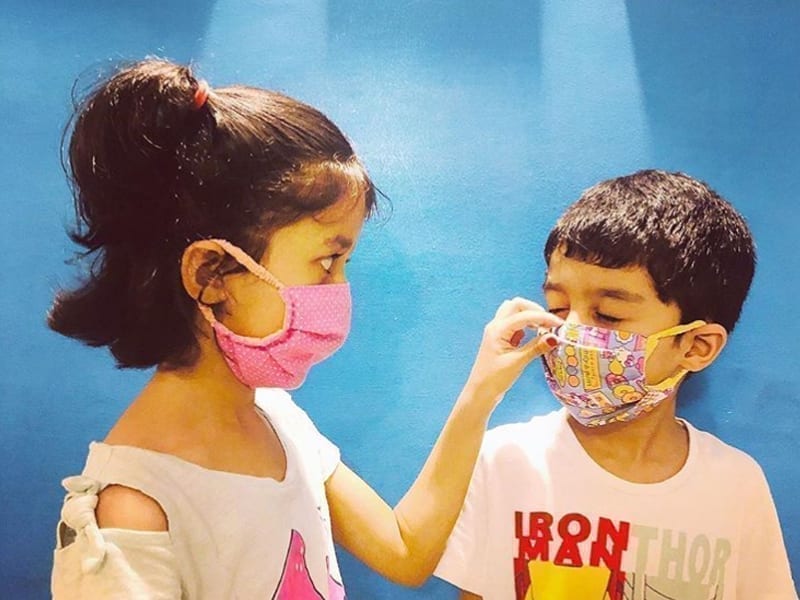‘Back to school.’ This used to be a phrase that brought smiles to our little one’s face and also, a joy to parents for having some time off while kids were away studying. Alas, 2020 has been the year of change and the meaning of ‘back to school’ has changed as well.
While life during the COVID-19 pandemic is difficult for parents and children alike, the buzz word ‘social distancing’ has become one of the key things we should all be doing to help stop the spread of Coronavirus. But, a practice that literally contradicts the basic essence of humanity, a word that’s hard enough for adults to truly understand and follow—how do you go about explaining it to kids who keep asking why they can’t visit grandparents or play with their best friends anymore?
As schools prepare to reopen and parents prepare to send kids back to class, expressing the importance of social distancing and mask-wearing to young kids may prove difficult.
Very young children look at the world in a very literal way. I think it is best to start with understanding what they know about the importance of mask-wearing and staying six feet away from their friends and teachers, and then be clear about your expectations.12 Ways To Teach Your Kids The New Rules Of The Pandemic
Since my kids are kindergarteners, we have been trying to come up with the simplest ways to explain to them the concept of social distancing, and the importance of safety and hygiene. I am sharing a few ways to talk about social distancing, and maintaining hygiene and safety with young children to get them ready for ‘back to school’ days.
1. Keep It Simple
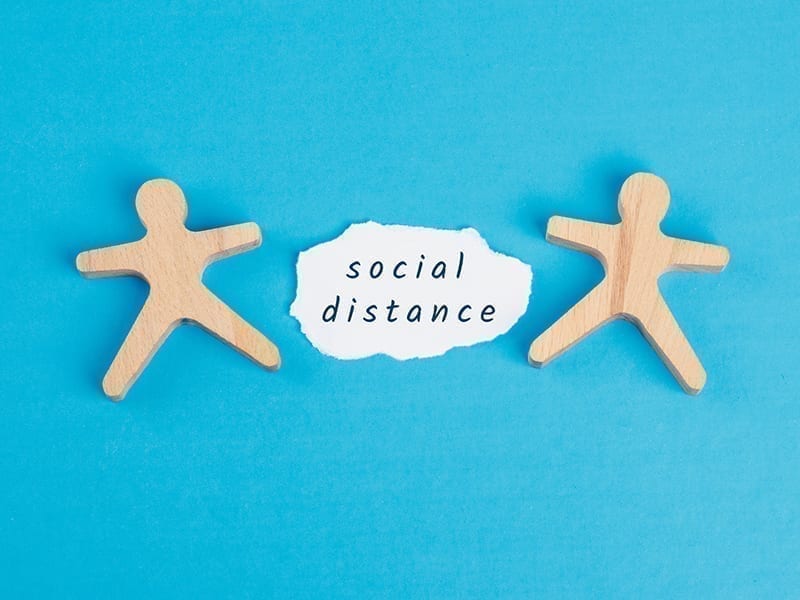
First and foremost, it’s important to break down the word ‘social distancing’ into something children can understand easily. To help children understand the concept, we call it ‘physical distancing’. Practically the idea is to maintain a physical distance; the social part of any relationship can still exist!
2. Talk About The ‘Whys’
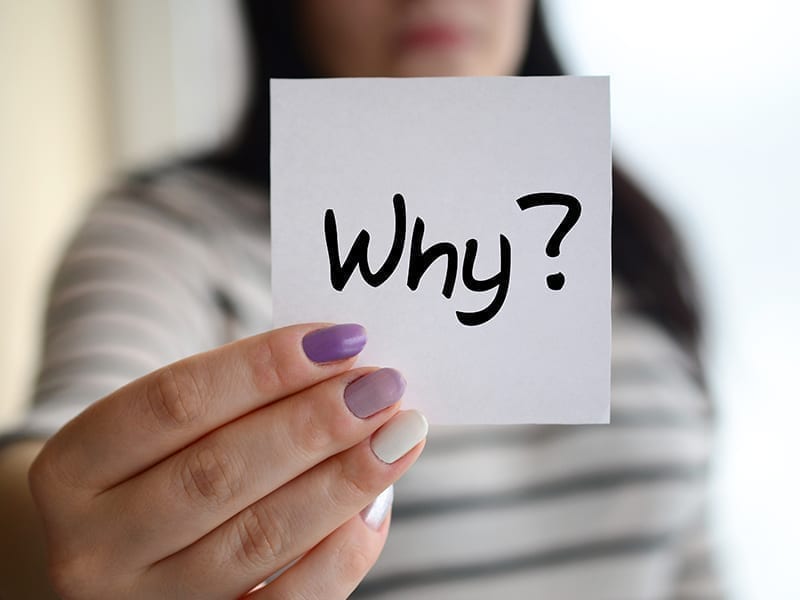
With my kids, I have seen that any statement or argument from our end as parents gains more value if complemented with a convincing reason or example. Also, according to health experts, giving your children explanations behind why certain hygiene practices are important, can go a long way. When kids understand the logic behind why they need to wash their hands or brush their teeth, it becomes a lot easier for them to remember to do so.
Similarly, when discussing ‘physical distancing’ and the need for the same, start with a general discussion about germs. Here’s what you can say: “Germs are so tiny you cannot see them with your eyes. These germs can make us sick if they enter our bodies. Sometimes, people do not know if they are carrying germs that make others sick. So that’s one reason why we’re all physical distancing.”
3. Show What Six Feet Looks Like
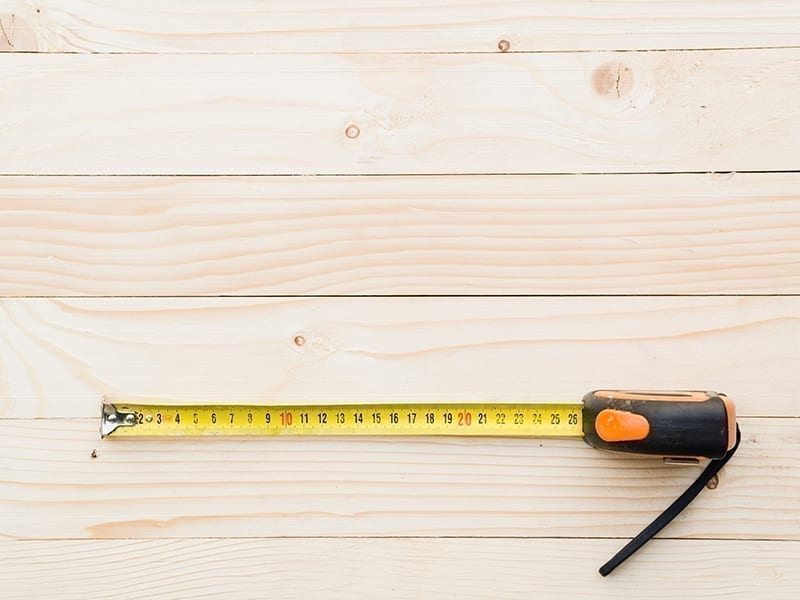
Measure a ribbon or string to 6 feet and place it on the floor so everyone can learn how far six feet is. Now remove the ribbon or string and have each family member guess how long six feet is. The closest guess is the winner. This is the ideal distance you must maintain when outside your home.
Cut out pictures of people from magazines and create an outdoors scene on a sheet of paper. Stick these cutouts at an appropriate distance keeping them as far apart as possible to signify social distancing. Use toys like stuffed animals to explain how physical distance is to be maintained. Kids learn very fast with role play.
Have your child set up a socially distant classroom with their stuffed animals and walk them through regular classroom scenarios, like getting up to sharpen a pencil to further cement the idea.
4. Tell Stories To Younger Kids
One of the best ways for kids to understand a variety of topics is through stories. Educational videos can easily be found on YouTube; some are super fun and memorable with cute cartoons that your child will love! You can use other visual cues like flashcards and picture schedules.
5. Teach Kids About Germs & Bacteria
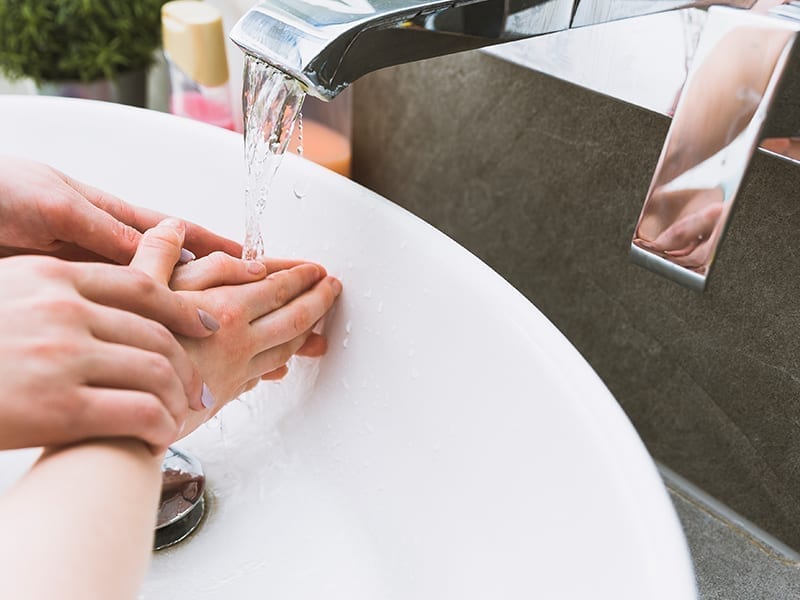
Explain to your child that a germs’ biggest enemy is soap and water. To represent how ‘germs run away from soap’, here’s a ‘germs scatter’ experiment to make learning about it fun while emphasising the importance of hand wash.
How exactly do you do this?
- Put water in a bowl
- Put pepper in the water, which will represent germs
- Put soap on your toddler’s finger
- Put their finger in the water
- The pepper will quickly scatter to the sides
For very young children who may not understand the concept of viruses and germs, this video from Sesame Street’s Grover is a great way to help them learn about social distance.
6. Make A Big Deal Out Of Handwashing
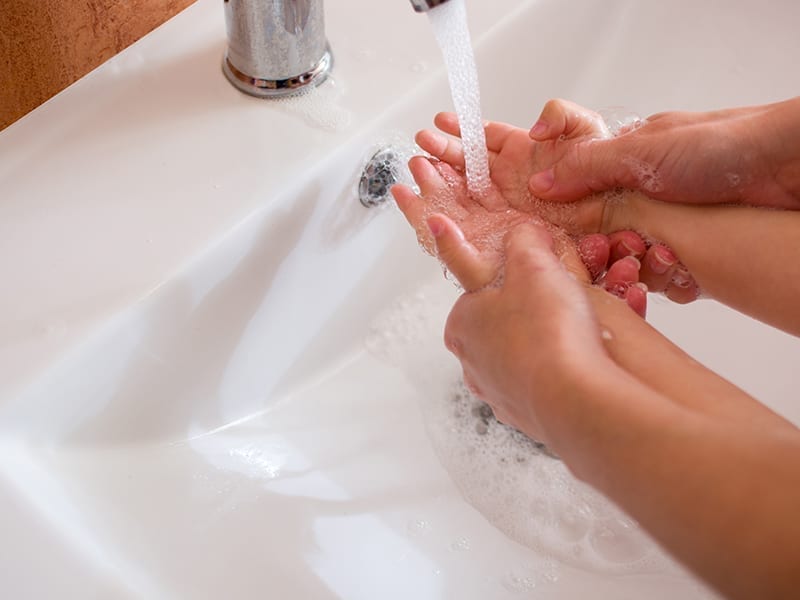
- Teach kids the five steps for handwashing: Wet, Lather, Scrub, Rinse and Dry
- Come up with a family handwashing song
- Teach them how long to wash their hands: Scrubbing with soap and water for at least 20 seconds
- And teach them when to wash hands: After using the restroom, playing outside, coughing, sneezing or blowing their nose, before or after eating, and upon entering the home (or school)
7. Remind Your Child Not To Touch Their Face
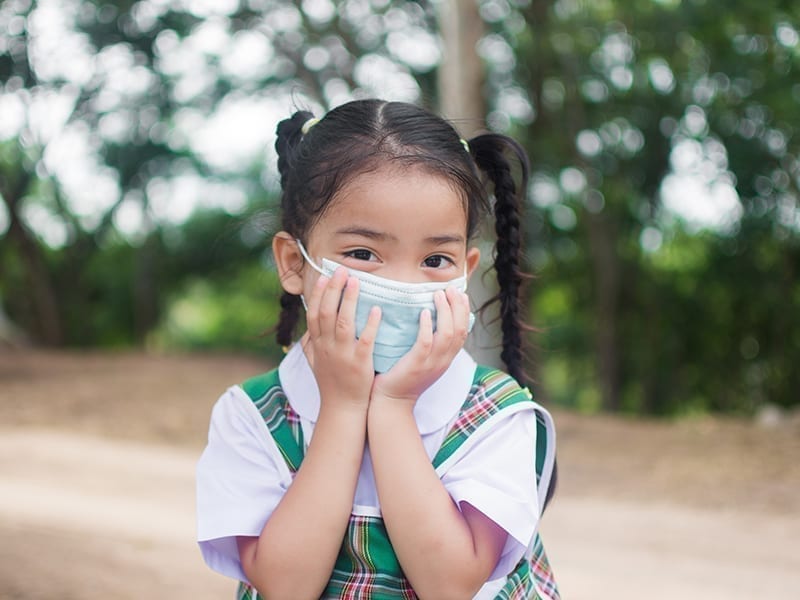
Make a game to see how few times we can touch our faces with a reward for the least number of touches.
8. Identify High-Touch Surfaces
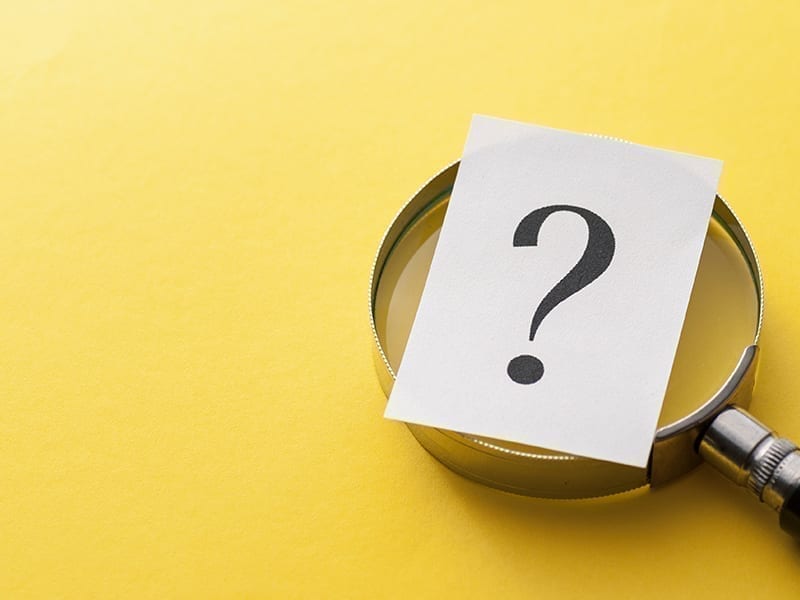
Help your child think about which surfaces they (and other people) touch frequently. Re-emphasise this by playing Q&A games.
9. Pretend Play
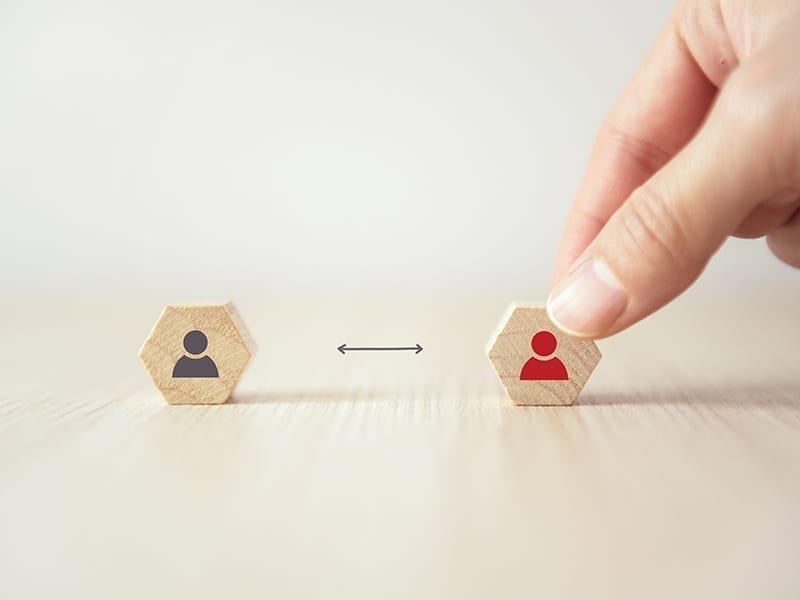
Expressing the importance of social distancing and mask-wearing to young kids may prove difficult. See that the child doesn’t get overwhelmed. Contrary to what you’ve been telling them all these years about the importance of sharing and caring, help them understand that they shouldn’t share things like crayons, toys, and snacks. Answer this confusion by doing pretend play.
Show fun ways to greet friends that don’t require touching. Young children are very touchy-feely and love to greet one another with hugs and high fives. Express to your children that in order to keep everyone healthy, they’re going to have to find new ways to say ‘hello’. Experiment with air high fives or elbow bumps, or let your child come up with a new, special socially distant greeting to share with their friends.
Because your child will be wearing a face mask, which can impact their ability to fully display emotions, help them prepare emotion cards/emoticons or feeling faces attached to the end of popsicle sticks for an easy way in which they can express their emotions!
10. Role Model Good Behaviour
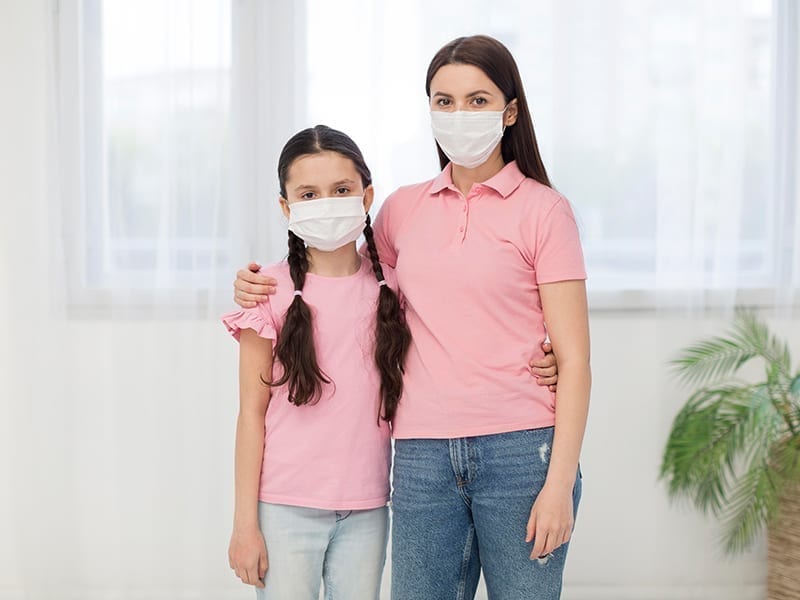
Maintaining social distance in your community, wearing a mask every time you are outdoors, washing hands frequently—these are some cues that a child will pick fast and try to imitate.
11. Keep The Conversation Open
Be vocal about basic symptoms like sore throat, cough, upset stomach, headache or body aches. Explain to them how these feel. Ask them every day about how they are feeling. Have younger children explain back to you what each of these symptoms might feel like, so you can be sure they know what you’re asking.
12. Help Your Child Build New Habits
- Give positive reinforcement like compliments and high-fives.
- Offer small rewards like a few minutes of a favourite activity.
- Point out and praise when they’re doing things correctly.
- Listen to their suggestions and take them seriously. When a child’s feelings are dismissed, they may think you’re saying their feelings are not OKAY. In that case, they’re not going to share those feelings again. It also doesn’t help reduce their stress
In the process of explaining physical distance, always talk to your children in the language they will understand. Be honest and truthful. Give facts to the extent possible. Share the reason why physical distance is important. Be supportive and empathetic. Be sure to give them a chance to absorb information and ask questions along the way.
Whether or not your kids fully understand social distancing, keep emphasising what they can do to keep themselves and their family healthy, and the things they can do that are under their control. Conversations are likely going to need to be repeated, especially in the first few months, as everyone is settling into this ‘new normal’ we all hate to talk about.
Remember that your child will be dealing with the stress of the ongoing crisis differently from you. Create a supportive and nurturing environment and respond positively to questions and expressions of their feelings. Show support and let your child know that it’s not only okay but normal, to feel frustrated or anxious at times like this.
And as parents, I must say we all are already doing an amazing job and keeping things as normal for our children as possible. So please remember to be kind to yourself!
Go Mommy!

